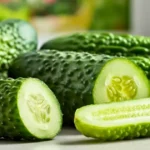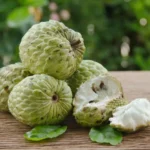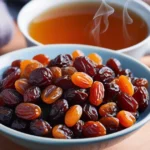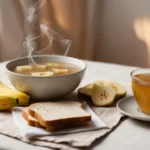Explore the incredible world of blue tea health benefits right from your cup! Today, boost your health with the benefits of blue tea!
Exploring the Unique Qualities of Blue Tea
What is Blue Tea?
Blue tea, also known as butterfly pea flower tea, is a unique herbal tea made from the dried flowers of the Clitoria ternatea plant. Its vibrant blue color, derived from natural pigments, stands out among other herbal teas.
A. Origin and Types
Blue tea traces its roots to Southeast Asia, where the butterfly pea flower thrives. There are various types of blue tea, each with distinct characteristics, but they all share the stunning blue color that makes this beverage so visually appealing.
B. Notable Characteristics
Besides its mesmerizing color, blue tea is known for its earthy and slightly sweet flavor profile. It’s caffeine-free, making it an excellent choice for those seeking a soothing beverage without the stimulating effects of caffeine.

The Health-Boosting Benefits of Blue Tea
1. Rich in Antioxidants:
Blue tea is renowned for its rich antioxidant content, primarily due to the presence of flavonoids and anthocyanins. These compounds are crucial in neutralizing free radicals, contributing to overall health and well-being.
2. Immune System Support
The antioxidants found in blue tea can help bolster the immune system, providing added protection against infections and diseases. Regular consumption may contribute to a stronger and more resilient immune response.
3. Stress Relief
Blue tea has calming properties that may aid in stress reduction. The presence of certain compounds can promote relaxation and alleviate tension, making it an excellent choice for those looking to unwind after a long day.
4. Digestive Aid
Preliminary studies suggest that blue tea may benefit digestion and gut health. The herbal infusion could help soothe the digestive tract and promote a healthy balance of gut bacteria.
5. Lowering Cholesterol Levels
The antioxidants in blue tea play a role in reducing cholesterol levels, which is crucial for maintaining cardiovascular health and preventing heart-related issues.
6. Brain Health
Some studies have suggested that blue tea may have positive effects on brain function. The presence of antioxidants in blue tea may help protect against cognitive decline and improve memory retention. Additionally, blue tea has been shown to contain compounds that can support neurotransmitter function and enhance mood.
7. Eye Health
The butterfly pea flower, which is the main ingredient in blue tea, contains high levels of lutein and zeaxanthin, which are critical nutrients for eye health. These antioxidants help protect the eyes from harmful blue light and promote retinal health. Regular consumption of blue tea may reduce the risk of age-related macular degeneration and other eye conditions.
Possible Side Effects and Precautions to Consider
– Caffeine Content:
Blue tea contains caffeine, albeit in tiny amounts compared to traditional black tea. However, those who are sensitive to caffeine may experience side effects such as increased heart rate, anxiety, and difficulty sleeping. It is recommended to limit blue tea consumption or avoid it altogether if you experience adverse effects from caffeine.
While blue tea is generally caffeine-free, it’s important to note that some blends may contain trace amounts. Individuals sensitive to caffeine should exercise caution and opt for caffeine-free varieties.
– Allergies or Sensitivities
Individuals with known allergies to legumes or flowers, especially those in the pea family, should be cautious when trying blue tea. Allergic reactions may include skin rashes, itching, or respiratory issues.
Blue tea may trigger allergic reactions in individuals who are sensitive to specific ingredients. It is recommended for those with pre-existing allergies to consult with a doctor before consuming blue tea to ensure it is safe for them.
– Interactions with Medications:
Blue tea may interact with certain medications, particularly those related to blood pressure and blood clotting. If you are taking medications, consult a healthcare professional before incorporating blue tea into your routine.
– Pregnancy and Breastfeeding
Blue tea is generally considered safe for pregnant women and breastfeeding mothers. However, it is advisable to consult with a healthcare professional before incorporating blue tea into your diet during pregnancy or breastfeeding, as there may be specific guidelines or precautions to consider.
Tips for Incorporating Blue Tea into Your Daily Routine
1. Brewing Techniques:
To extract the maximum benefits and vibrant color from blue tea, steep it in hot water for 3-5 minutes. Add a splash of citrus juice for a deeper hue, which changes the pH and intensifies the blue color.
2. Delicious Blue Tea Recipes:
Add blue tea to smoothies, cocktails, or desserts. Its unique color can add a visually appealing element to various culinary creations.
3. Best Time to Consume:
Enjoy a cup of blue tea in the afternoon or evening to take advantage of its stress-relieving properties. However, it can be consumed throughout the day, as it is caffeine-free.

Popular Blue Tea Varieties
Blue tea is a type of tea that is characterized by its deep blue color. This unique hue is achieved by infusing the tea leaves with a component called anthocyanin, which is found in certain plants and fruits. Blue tea has become increasingly popular due to its eye-catching appearance and refreshing taste.
– Butterfly Pea Flower Tea
The flowers make butterfly pea tea, steeped in hot water and releasing a vibrant blue color. The tea has a sweet, floral taste that can be enjoyed hot or cold. It’s a popular choice for both its aesthetic appeal and health benefits.
– Bluechai Tea
Bluechai tea is another variety gaining popularity for its vibrant color and potential health advantages. It’s often praised for its unique taste and versatility in various recipes.
– Clitoria Ternatea Tea
Also known as Asian pigeonwings, Clitoria Ternatea tea shares the same rich blue hue as other blue teas. Blue tea is recognized for its mild taste and potential health-promoting properties.
– Rooibos Tea
Rooibos tea, known as red tea, is not a true tea but rather an herbal infusion made from the leaves of the Aspalathus linearis bush. Despite its name, rooibos tea can be deep blue when brewed properly.
The blue color is due to a combination of the flavonoids found in the rooibos leaves and the brewing process. Rooibos tea is known for its soothing flavor and can be enjoyed both hot and cold.
– Blue Tea Blends
In addition to pure blue teas, various blends that incorporate blue tea leaves and other ingredients are available. These blends can offer a range of flavors and unique tastes. Some popular blue tea blends include:
* Blue Earl Grey Tea
A blend of black tea infused with bergamot oil and butterfly pea flower, resulting in a deep purple-blue hue.
* Blue Jasmine Tea
A combination of green tea leaves, jasmine flowers, and butterfly pea flowers, creating a delicate floral-blue tea.
* Blue Chamomile Tea
A soothing chamomile and butterfly pea flower blend offering a gentle floral-blue flavor.
Tasty Blue Tea Recipes to Try at Home!
Blue tea has gained popularity among health-conscious individuals in recent years. Its naturally blue color and unique taste make it a trendy beverage choice. We will explore some tasty blue tea recipes you can try at home. Whether you’re a beginner or an experienced tea enthusiast, these recipes are easy to follow and sure to quench your thirst for flavor and health benefits.
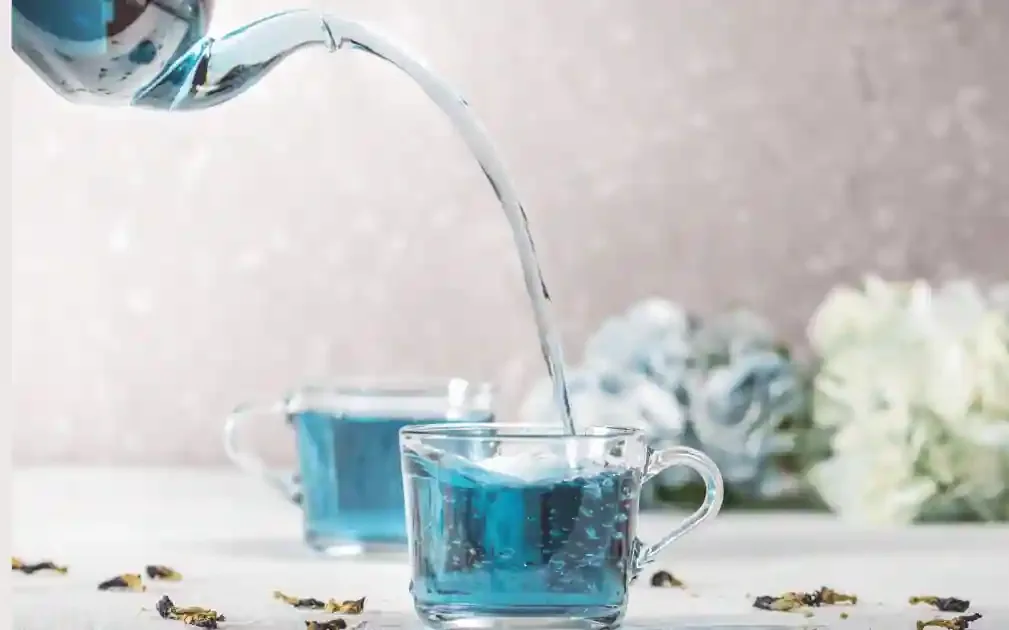
Recipe 1: Blue Butterfly Pea Tea
Ingredients:
– 2 tablespoons of dried butterfly pea flowers
– 2 cups of water
– Honey or sweetener of choice (optional)
Instructions:
1. Brew the butterfly pea flowers by placing them in a cup or teapot.
2. Add hot water to the flowers and let them steep for 5-10 minutes.
3. Strain the tea into a cup or glass, adding honey or sweetener if desired.
4. Enjoy your beautiful blue tea!
Recipe 2: Blue Matcha Tea Latte
Ingredients:
– 2 tablespoons of matcha powder
– 1 cup of milk (dairy, non-dairy, or plant-based)
– 1 teaspoon of vanilla extract
– Blue food coloring (optional)
Instructions:
1. Heat the milk in a small saucepan over medium heat.
2. Remove the heat and add matcha powder Once the milk starts to steam.
3. Whisk the matcha and milk until the powder fully dissolves.
4. Stir in the vanilla extract for flavor.
5. If using blue food coloring, mix a few drops into the milk mixture to create a vibrant blue color.
6. Pour the tea latte into a mug and enjoy!
Recipe 3: Blue Orchid Tea
Ingredients:
– 1 teaspoon of dried orchid petals
– 2 cups of water
– Honey or sweetener of choice (optional)
Instructions:
1. Brew the orchid petals in a cup or teapot.
2. Add hot water to the flowers and let them steep for 5-10 minutes.
3. Strain the tea into a cup or glass, adding honey or sweetener if desired.
4. Enjoy your floral blue tea!
Blue tea is a delicious and refreshing beverage that offers a range of health benefits. By trying these tasty blue tea recipes at home, you can enjoy the unique flavor and aroma of blue tea while reaping its numerous benefits.
Whether you prefer a smooth blue butterfly pea tea, a frothy blue matcha latte, or a delicate blue orchid tea, these recipes are simple to make and delight your palate. So, why brew a cup of tea and indulge in the beauty of blue tea today?
Buying Guide
Where to buy blue tea \Where to Find Blue Tea
Blue tea is found in specialty shops, health food stores, and online platforms. Ensure you purchase from reputable sources to guarantee quality.
What to Look for When Purchasing
Consider the source, purity, and additional ingredients when buying blue tea. Opt for organic and responsibly sourced products for an optimal experience.
Conclusion: Embracing the Potential Benefits of Blue Tea Responsibly
In conclusion, blue tea offers various health benefits, from antioxidant support to stress relief and potential digestive aid. However, responsible consumption is critical, considering possible side effects and individual sensitivities. By mindfully incorporating blue tea into your routine and exploring creative ways to enjoy it, you can fully embrace this vibrant herbal infusion’s unique qualities and potential advantages.
FAQs (Frequently Asked Questions)
Blue tea is generally safe for daily consumption in moderation. However, consulting with a healthcare professional is advisable, especially if you have pre-existing health conditions.
While not a magic solution, the metabolism-boosting properties of blue tea may contribute to weight loss when combined with a balanced diet and exercise.
When consumed in moderation, blue tea is safe for most individuals. However, excessive intake may lead to side effects. It’s essential to be mindful of your consumption and consult with a healthcare professional if needed.
Experiment with complementary ingredients like citrus fruits or herbs to enhance the flavor of blue tea. Get creative with your brew to discover unique and delicious combinations.
Blue tea has soothing effects on the digestive system and may suit individuals with digestive issues. However, it’s always best to consult a healthcare professional for personalized advice.
Hi there! I’m content writer and blogger. With over two years of experience, I’ve shared my passion for writing across various platforms. I firmly believe in the transformative power of words and look forward to sharing this journey with you. Enjoy my work!

